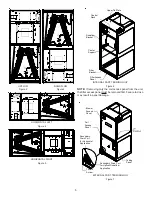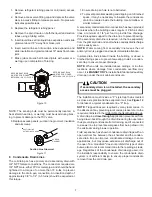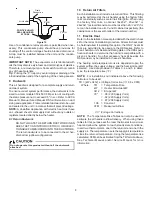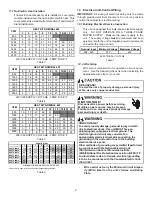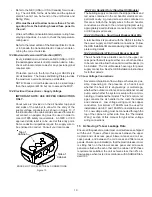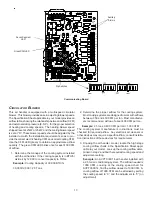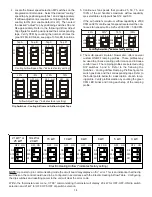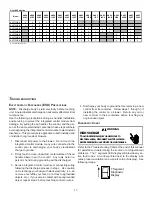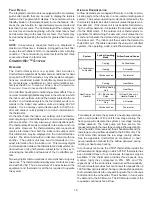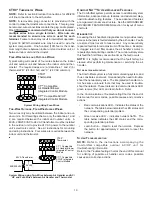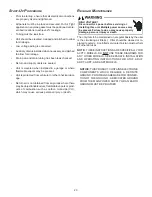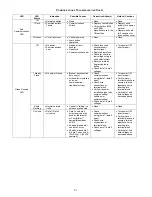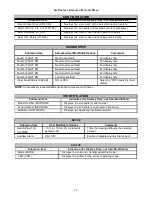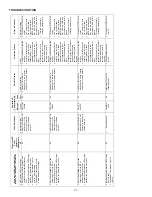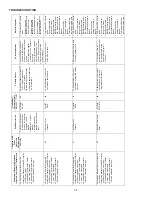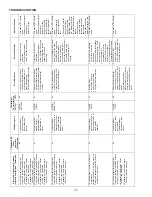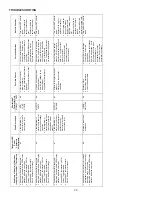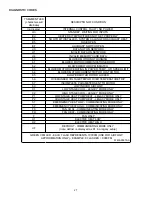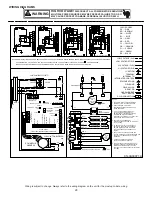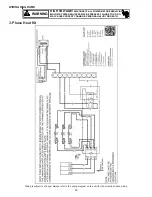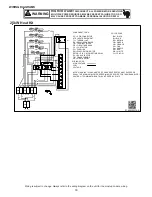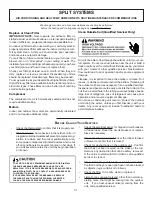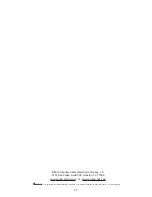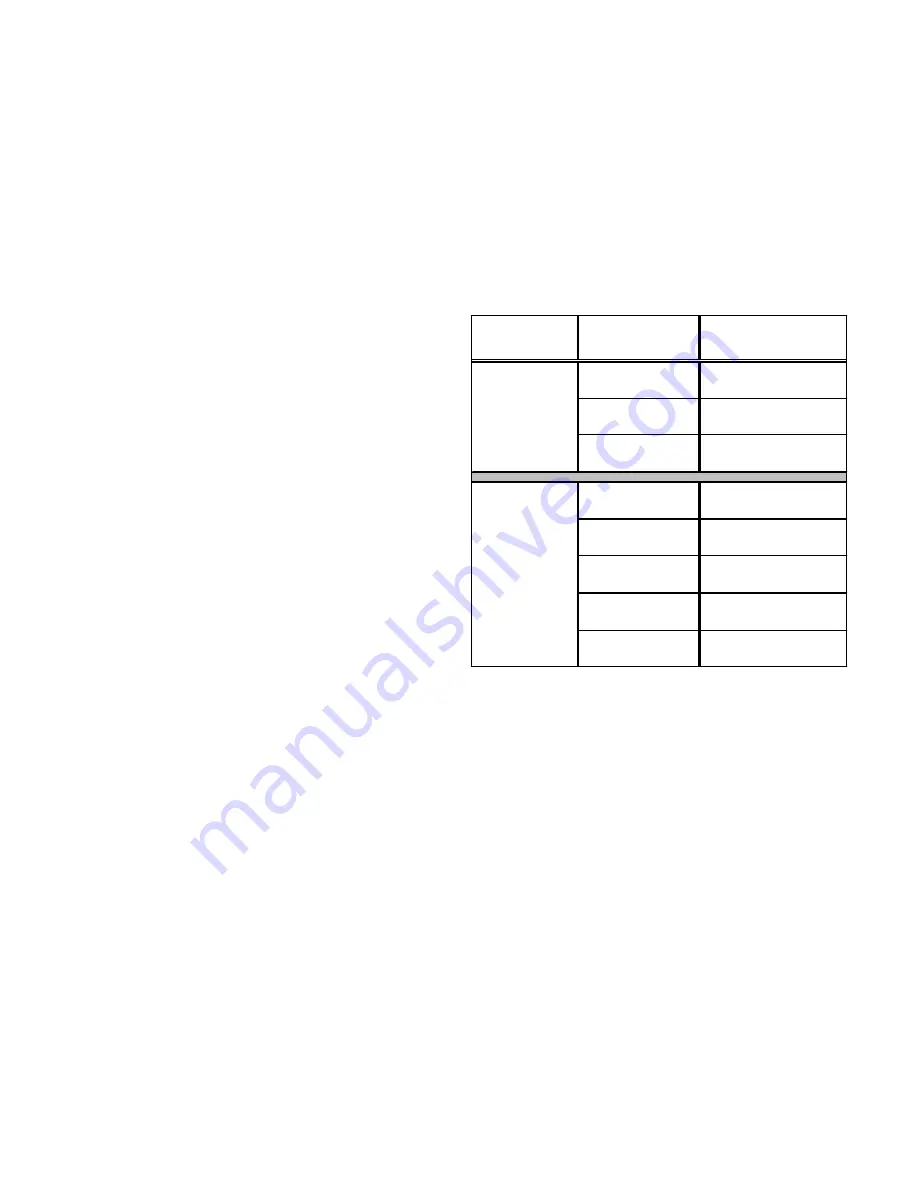
18
F
AULT
R
ECALL
The integrated control module is equipped with a momentary
push-button switch that can be used to display the last six
faults on the 7 segment LED display. The control must be in
Standby Mode (no thermostat inputs) to use the feature. De-
press the push-button for approximately two seconds and
less than five seconds. The LED display will then display the
six most recent faults beginning with the most recent fault
and decrementing to the least recent fault. The faults may
be cleared by depressing the button for greater than five sec-
onds.
NOTE:
Consecutively repeated faults are displayed a
maximum of three times. Example: A clogged return air filter
causes the air handler’s motor to repeatedly enter a limiting
condition. The control will only store this fault the first three
consecutive
times the fault occurs.
C
OMFORT
N
ET
™ S
YSTEM
O
VERVIEW
The ComfortNet system is a system that includes a
ComfortNet compatible air handler and air conditioner or heat
pump with a CTK0* thermostat. Any other system configura-
tions are considered invalid ComfortNet systems and must
be connected as a traditional (or non-communicating) sys-
tem (see the 24 V
OLT
T
HERMOSTAT
W
IRING
- N
ON
-C
OMMUNICATING
T
HERMOSTAT
C
ONNECTIONS
section for details).
A ComfortNet heating/air conditioning system differs from a
non-communicating/traditional system in the manner in which
the indoor unit, outdoor unit and thermostat interact with one
another. In a traditional system, the thermostat sends com-
mands to the indoor and outdoor units via analog 24 VAC
signals. It is a one-way communication path in that the in-
door and outdoor units typically do not return information to
the thermostat.
On the other hand, the indoor unit, outdoor unit, and thermo-
stat comprising a ComfortNet system “communicate” digitally
with one another. It is now a two-way communications path.
The thermostat still sends commands to the indoor and out-
door units. However, the thermostat may also request and
receive information from both the indoor and outdoor units.
This information may be displayed on the ComfortNet ther-
mostat. The indoor and outdoor units also interact with one
another. The outdoor unit may send commands to or re-
quest information from the indoor unit. This two-way digital
communications between the thermostat and subsystems (in-
door/outdoor unit) and between subsystems is the key to
unlocking the benefits and features of the ComfortNet sys-
tem.
Two-way digital communications is accomplished using only
two wires. The thermostat and subsystem controls are pow-
ered with 24 VAC Thus, a maximum of 4 wires between the
equipment and thermostat is all that is required to operate
the system.
A
IRFLOW
C
ONSIDERATION
Airflow demands are managed differently in a fully commu-
nicating system than they are in a non-communicating wired
system. The system operating mode (as determined by the
thermostat) determines which unit calculates the system air-
flow demand. If the indoor unit is responsible for determin-
ing the airflow demand, it calculates the demand and sends
it to the ECM motor. If the outdoor unit or thermostat is re-
sponsible for determining the demand, it calculates the de-
mand and transmits the demand along with a fan request to
the indoor unit. The indoor unit then sends the demand to
the ECM motor. The table below lists the various ComfortNet
systems, the operating mode, and airflow demand source.
System
System Operating
Mode
Airflow Demand Source
Cooling
Air Conditioner
Heating
Air Handler
Continuous Fan
Thermostat
Cooling
Heat Pump
Heat Pump Heating
Only
Heat Pump
HP + Electric Heat
Strips
> of Heat Pump or Air
Handler Demand
Electric Heat Strips
Only
Air Handler
Continuous Fan
Thermostat
Air Condi
Air Handler
Heat Pump + Air
Handler
For example, assume the system is a heat pump matched
with an air handler. With a call for low stage cooling, the
heat pump will calculate the system’s low stage cooling
airflow demand. The heat pump will then send a fan
request along with the low stage cooling airflow demand to
the air handler. Once received, the air handler will send the
low stage cooling airflow demand to the ECM motor. The
ECM motor then delivers the low stage cooling airflow.
See the applicable ComfortNet air conditioner or heat
pump installation manual for the airflow delivered during
cooling or heat pump heating.
In continuous fan mode, the CTK0* thermostat provides the
airflow demand. Depending on which CTK0* thermostat has
been installed three or four continuous fan speeds may be
available. If the thermostat provides three speeds (low,
medium, high) they correspond to 25%, 50% and 75%,
respectively, of the air handlers’ maximum airflow capability.
If the thermostat provides four continuous fan speeds then a
100% airflow option is added. During continuous fan operation,
the thermostat sends a fan request along with the continuous
fan demand to the air handler. The air handler, in turn, sends
the demand to the ECM motor. The ECM motor delivers the
requested continuous fan airflow.


